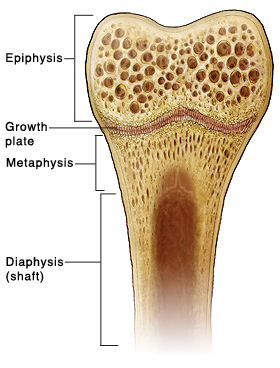Pediatric Skeletal Growth
Pediatric Skeletal Growth
A skeleton in progress
In infants, the bones in the head are not fused together. This allows the head to be flexible so it can pass through the birth canal during childbirth. The bones in the skull don’t fully fuse until ages 1 to 2.
Children have more dense, elastic tissue (called cartilage) in their joints and other bony structures (such as the ribs). This allows the bones to continue to develop and grow as the child grows. This extra cartilage develops into bone over time. By about age 16, all extra cartilage has matured into bone.
Children have growth plates in each long bone. A growth plate is an area of soft bone at each end of the long bones. Growth plates allow the bone to grow as the child grows. The growth plates fuse by the time a child is 14 to 18 years old.
Updated:
June 02, 2018
Sources:
Irons-Georges T., Magill's Medical Guide, 6th ed.
Reviewed By:
Bass, Pat F. III, MD, MPH,Image reviewed by StayWell medical illustration team.,Joseph, Thomas N., MD,Sather, Rita, RN
